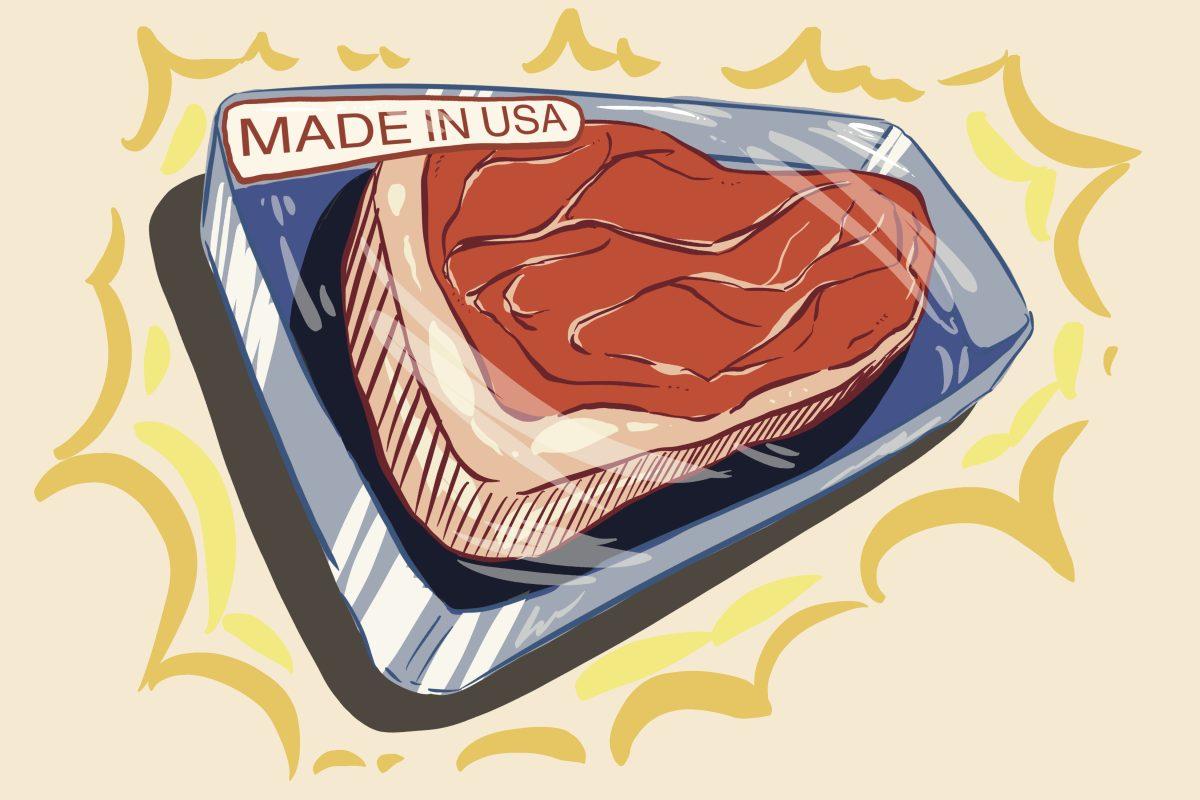Food Safety and Inspection Services released a new requirement on March 6 that only allows products to be labeled as a “Product of USA” if the food’s entire lifespan took place in the U.S.
Before produce and products can make it to the aisles in grocery stores, precautions must be taken to ensure consumers are receive safe food products such as the livestocks, inspections, packaging and labeling.
Dana Hanson, an associate professor in food science at NC State and meat specialist, said the process is to make sure consumers receive safe, affordable and wholesome foods.
“If you can imagine anything in the grocery store, whether it’d be fresh product that is literally cut and delivered, say in the produce section, or a box of cereal, or a gallon of milk, or canned green beans, there’s a lot of science to get it there,” Hanson said. “And so our department [Food, Processing and Nutrition Sciences] addresses all those different touchpoints to get foods to consumers safe, affordable and wholesome.”
Regardless if it’s fresh produce or processed foods, both products are still regulated through different agencies.
Gabriel Harris, professor in food science and co-director of the undergraduate food science program at NC State, explained the difference between products regulated by USDA and FDA.
“USDA is really in charge of raw meat products, hamburgers, those kinds of things,” Harris said. “Something like a Slim Jim or something at a convenience store, that would be more FDA territory.”
In the USDA department, the Food Safety and Inspection Service is responsible for following safety and inspection regulations on raw products such as meat, poultry and eggs.
According to the Food Safety and Inspection Services, the public has petitioned to revise “its regulations to define the conditions under which voluntary claims may be used on the labels of meat, poultry and egg products, as well as voluntarily inspected products, to indicate that the products are of U.S. origin.”
Hanson said although various animals are born, raised and processed in the United States, there’s still a demand to import meat products from other countries due to the size and population of our country, as well as to fulfill fast food restaurant ingredients.
“Demand for hamburger is high, so we may not have all that carcass ground, … but there’s a lot of McDonald’s, there’s a lot of In-N-Out, there’s a lot of other demand for those products that we need to fill in the gaps oftentimes with imported products,” Hanson said.
Countries like Brazil have way more products than their population uses, Hanson said.
“Brazil has a huge livestock industry, crop industry, and they export a tremendous amount of their product, partially because A: they’ve got a lot of it, and B: they produce more than the population can consume,” Hanson said.
Even if animals are born in other countries and are brought to the U.S. to be raised, Hanson said consumers do not need to worry about the process because the animals are under the guidance of the U.S.
“Unequivocally, we have the safest, most abundant and affordable food supply in the world,” Hanson said. “And in vain, to be processed in the United States, we’ve got food safety regulations … frontline inspectors in all food processing plants.”
“It’s really not an issue because the cattle that come from Canada are raised in a responsible manner, but once they come in the U.S., they’re under our guidance from even the live production side, but certainly in the food processing arena,” Hanson said. “So it’s not like we’re bringing inferior products in from other countries and trying to pass it off as lesser quality or less wholesome products.”
Harris said that products imported to the U.S. would still need to follow regulations in order for it to be sold here, and companies would need to be sure they are following proper legal requirements.
“If you’re selling from the U.S. to wherever, or if you’re a company selling from any place to the U.S., you’d have to do the same thing and ask what are the U.S. labeling laws. And make sure that they are followed because if not, then there’s a strong possibility that you would not be able to sell the product,” Hanson said.
Mary Margaret Hanna, a graduate student in English, said she buys products from the U.S.
“I personally buy from the farmers market, so those are things that are coming from the U.S., but I know that that’s not economically feasible for everybody,” Hanna said.
MJ Kiadii, a non-degree student, said it doesn’t matter where his meat products come from geographically and focuses more on the environment of how meat products are made.
“I don’t really care, geographically where it’s from, moreso, if it’s from an ethical place that it’s made in,” Kiadii said. “I don’t really want to eat meat that I know is coming from somewhere where people and things are treated really badly.”













